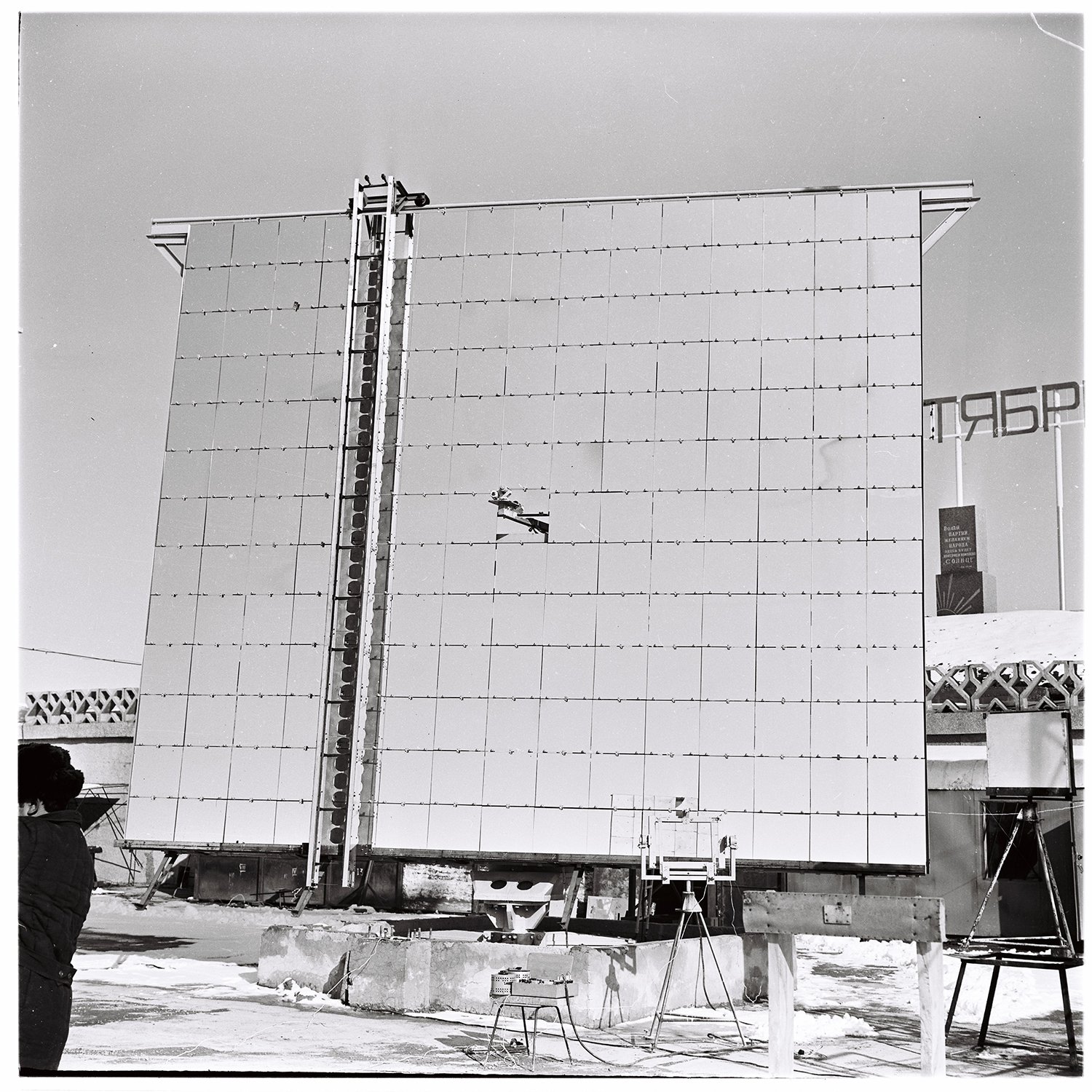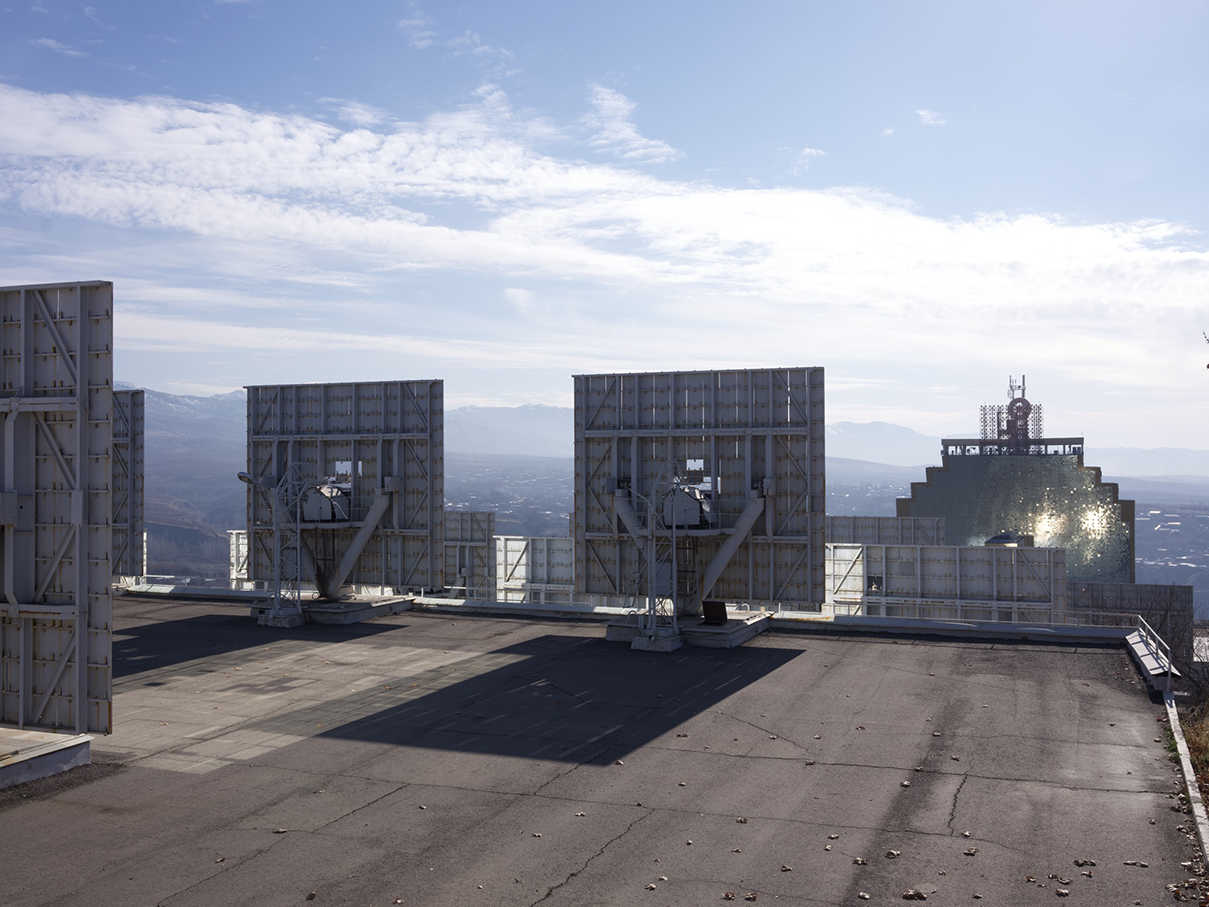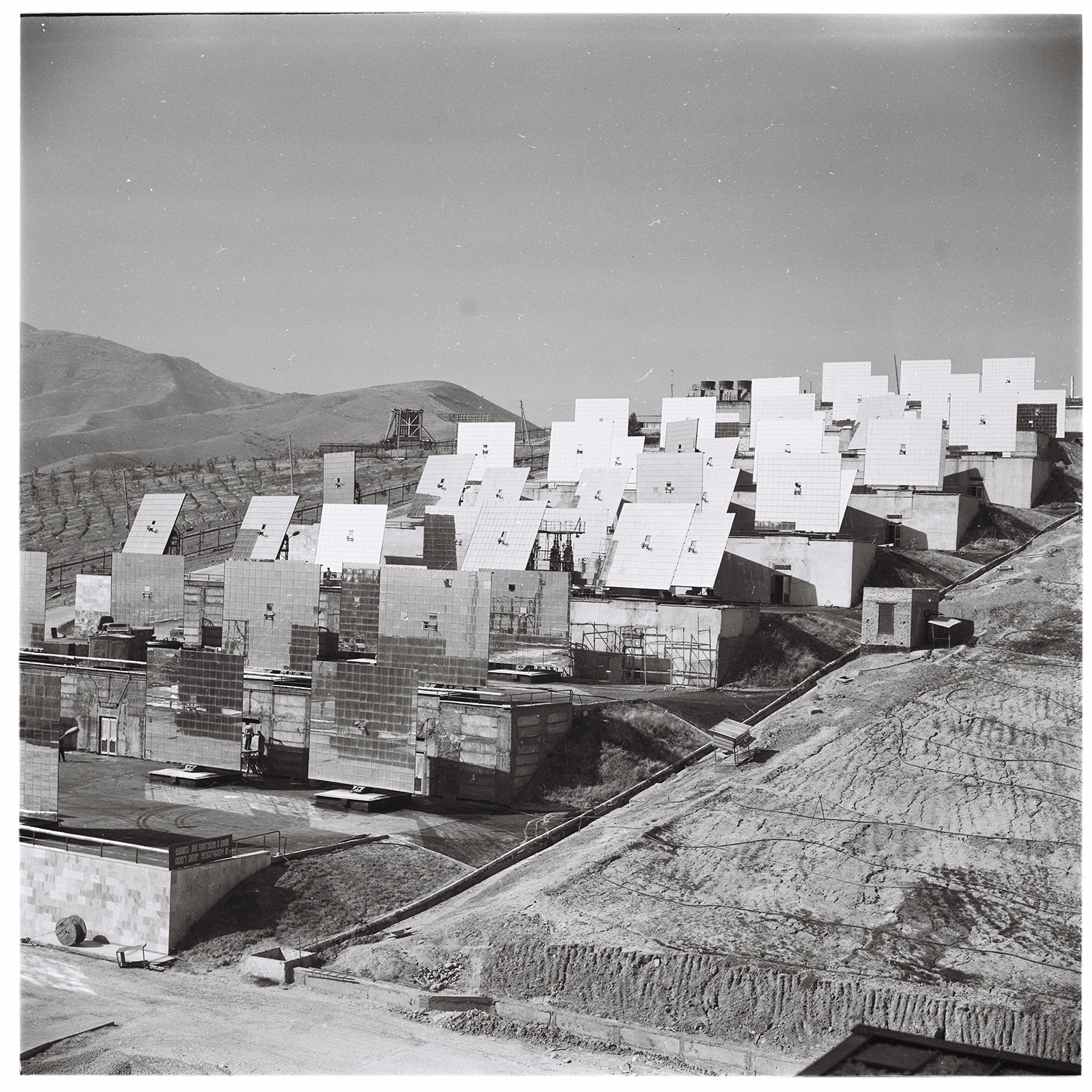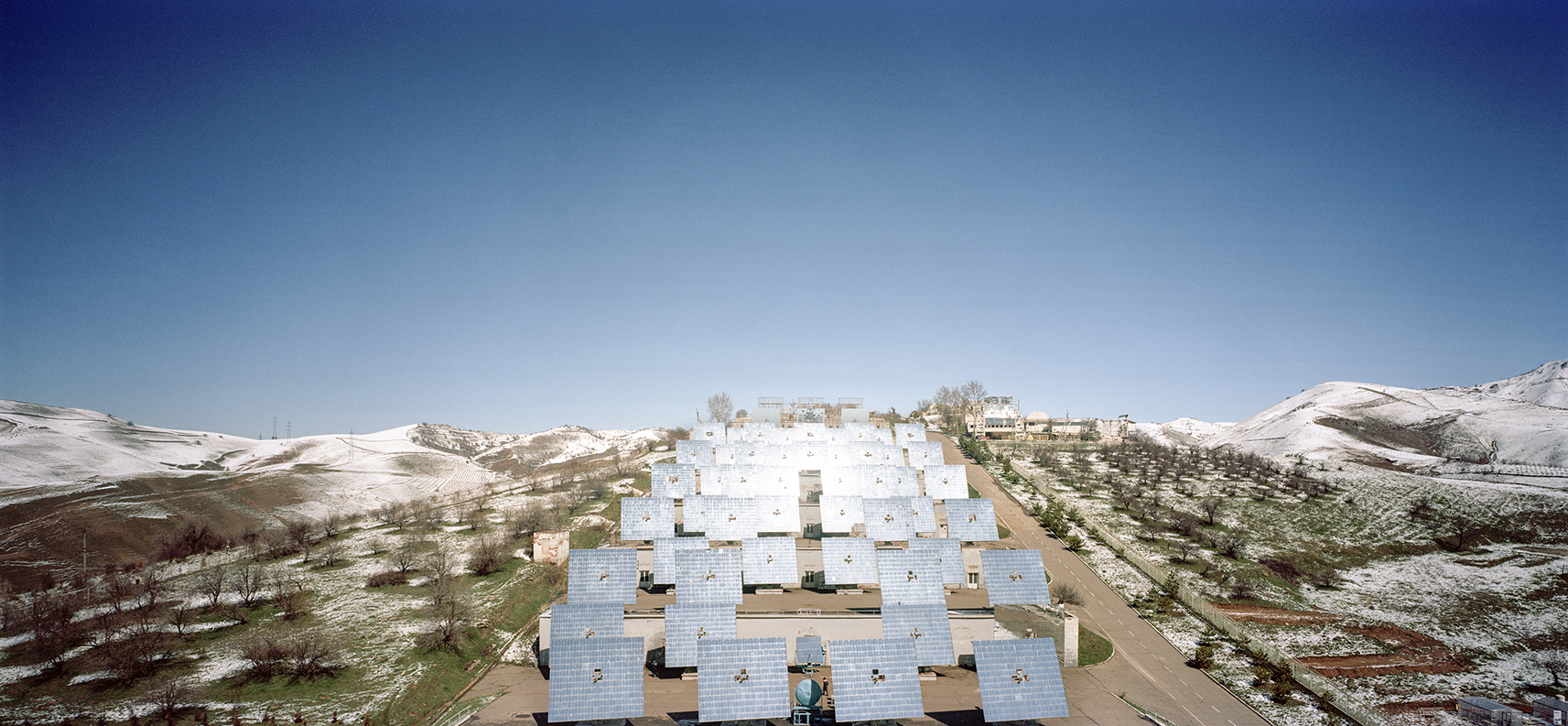The procedure involves tracking the sun’s position during the day with a maximum deviation of 1.5 milliradians. A “library” (software) from Schneider Electric is used for sun tracking, based on the output of a certified European astronomic laboratory. This software identifies the solar trajectory in different seasons in any given location of the planet and is connected to a meteorological station that determines the operating mode based on clouds and winds. The control system is equipped with wi-fi connectivity and will be used on the azimuth drive. It enables the system to rotate around its own axis without physical limitations thanks to the use of a rotating joint applied only to the power cable prevent torsional stress on the control cables, which remain practically static except for minor movements in elevation return to its starting position at the end of the day by choosing the shortest rotation path, using the entire mechanical system. This reduces natural wear, lowers energy consumption for movement, and improves overall efficiency. The heliostat in the Pavilion features a 10.8 m2 mirrored surface on a dual-axis rotating support. It is designed to reflect sunlight onto a small concentrator for daily experimental use. Like the large solar concentrator in Parkent, this smaller version can reach temperatures of up to 3,000°C on a focal area of 2 cm2. This heliostat’s reflective surface is just one-fifth of that of the main heliostats in Parkent, inviting visitors to imagine the immense scale of the entire complex and the power generated by the coordinated operation of sixty-two giant machines, whose combined effort can rapidly generate temperatures of nearly 3,000°C on a focal area of 40 cm2. Due to the absence of sunlight in the Pavilion, the heliostat is oriented northward, facing the entrance and the circular oculus above. It is programmed to move at the speed of the sun, although it cannot actually track the sun indoors. Designed and manufactured in Italy, after the exhibition the heliostat will be transferred to the Solar Institute in Parkent, where it will serve as a prototype for a new generation of devices with improved design, mechanical system, and mirror technology.



